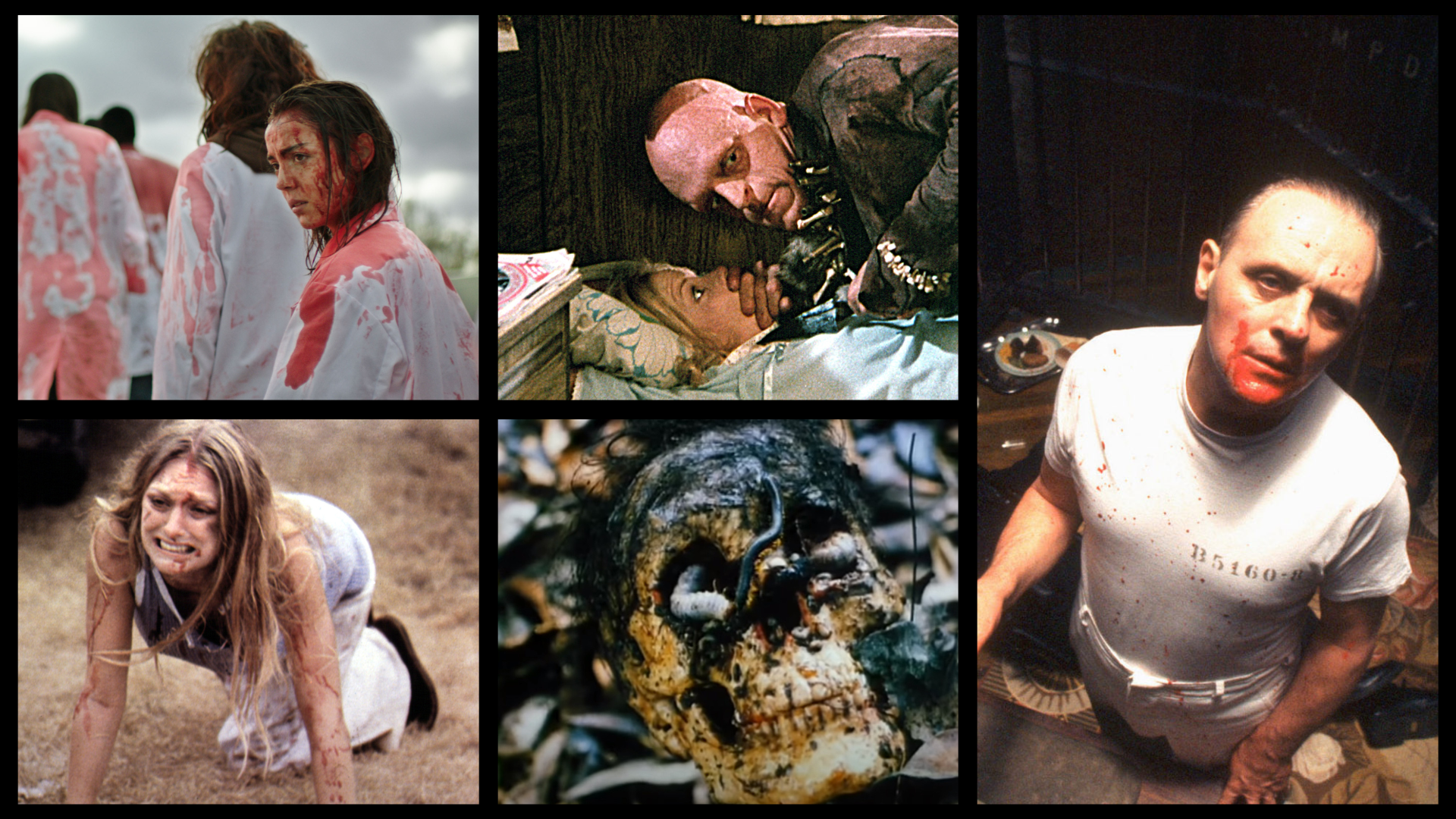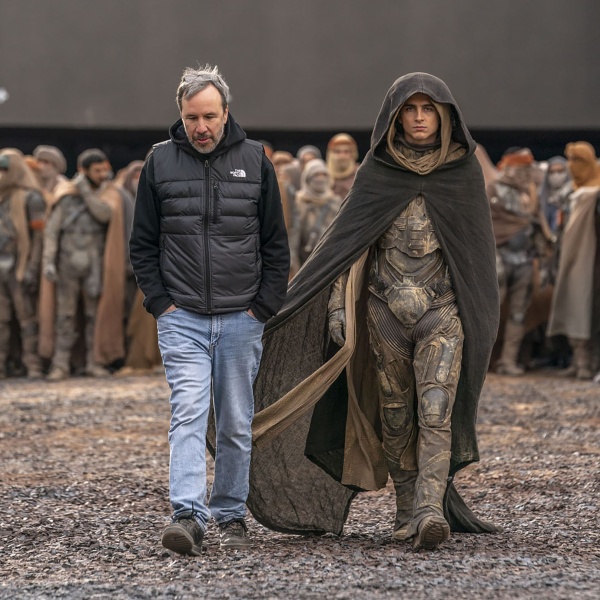If the most terrifying horror monsters are the ones that most reflect real-life terror, then cinematic cannibals might be the most terrifying monsters of all. Unlike vampires, werewolves, or ghosts, cannibals on film are fully flesh-and-blood humans — just with a taste for the flesh and blood of other humans. The garishness of the act makes cannibalism a perfect subject for shock horror, and the cannibal film fully came alive in the ’70s and ’80s via low-budget splatter triumphs like “The Texas Chainsaw Massacre” and “Cannibal Holocaust,” which pitted their protagonists against horrific waves of flesh eaters.
In recent years, cannibalism has had a bit of a “moment” — on film, at least. As The New York Times pointed out in 2022, a wave of movies, TV shows, and books exploring cannibalism has emerged in popular culture, from “Yellowjackets” to “Bones and All” to “Fresh.” Many of these projects use the practice as a way to symbolize social disruption, as an act so distant from modern social values that it feels alien. The hunger that a cannibal feels onscreen can stand in for sexual desire, for puberty, for insanity, or for a desire to regress from the restrictions of modern life into a new, animalistic way of life. But in the best cannibalism movies, what drives the man-eaters into consuming flesh is as mysterious to them as it is to the audience. Read on for the 10 best cannibal films of all time.
“Soylent Green” (1973)

Putting “Soylent Green” on this list, is, by nature, a spoiler. But has anyone who’s first watched this film in the years since 1973 gone into it without being aware of Charlton Heston screaming his head off that “Soylent Green is People?” Richard Fleischer’s ecological dystopian thriller is heavily rooted in the anxieties of the decade it was made in, imagining a world where overpopulation has brought humanity to the brink of collapse. To give a sense of how little the film’s vision of the future bore fruit, the global population of 2022 in the movie is 40 billion. In the actual 2022? It was just under 8 billion. But the film still finds some relevance in its unforgettable final twist, in which Heston’s NYPD detective stumbles into a greater conspiracy behind the murder of a rations manufacturer, and discovers the horrifying ingredients behind their latest product. As a metaphor for how corporations chew up real human beings for their own benefit, “Soylent Green” still resonates.
“The Texas Chain Saw Massacre” (1974)

One of the most revolutionary horror films of all time, “The Texas Chain Saw Massacre” practically invented the slasher movie when it pit a group of five young friends against a murderous clan of cannibals in a rural corner of The Lone Star State. And years later, there aren’t any slashers as plainly horrifying as the chainsaw-wielding Leatherface, a brutish figure serving his family of deranged flesh eaters. Future films in the franchise would delve into the mythology behind the character and his family in more depth, and they all suffer from it. It’s the character’s first incarnation, as an unknowable and animalistic force, that engrains itself in your nightmares.
“The Hills Have Eyes” (1977)

Before Wes Craven became one of the great mainstream horror directors, he was making rough-and-tumble small-budget horror like “The Hills Have Eyes,” one of the best horror films of the ’70s. Taking inspiration from “The Texas Chainsaw Massacre,” Craven’s cult classic follows an American family that cuts through the desert on a road trip, only for their RV to crash. That’s bad in typical situations, and even worse when a group of savage cannibals prey upon them. You can see Craven’s trademark humor pop in from time to time, but for the most part, “The Hills Have Eyes” is pure thrills and disturbing gore, with constant tension and an unforgettably terrifying performance from Michael Berryman as the vicious Pluto.
“Cannibal Holocaust” (1980)

One of the most notorious horror films ever made, “Cannibal Holocaust” attracted controversy the minute it came out because of its depiction of a documentary crew haunted by Amazon cannibals was so raw and so unflinching in its graphic horror that it proved easy to mistake for the real deal. Director Ruggero Deodato was arrested for obscenity after its release, and later received multiple murder charges due to false reports that people were really killed on camera (many animals did genuinely die making the movie, however). Even now, it’s banned in several countries, and remains a lightning rod for divisive opinions. But regardless of your opinion on whether or not it’s art or exploitation (or both), there’s no denying that “Cannibal Holocaust” and its unflinching realism was groundbreaking, paving the way for future found footage horror like “The Blair Witch Project.” Forty years later, few films still terrify like “Cannibal Holocaust” does.
“Parents” (1989)

A lovably goofy black comedy horror, Bob Balaban’s “Parents” is easily the least squirm-inducing film on this list. But it still gets its mileage by indulging in the worst fear of any child, that the parents who raise and love them aren’t the good people they say they are. From the perspective of 10-year-old Michael (Bryan Madorsky), parents Nick (Randy Quaid) and Lily (Mary Beth Hurt) are picture-perfect providers — until he begins to suspect that the lavish meals they eat every night don’t include animal meat. The well-calibrated performances by Quaid and Hurt are key to the film’s success, walking the line between goofiness and terror with precision. “Parents” won’t necessarily scare you, but it will probably make you think twice before grabbing a plate of your mom’s stew at your next family visit.
“The Cook, The Thief, His Wife, and Her Lover” (1989)

Peter Greenaway’s art film “The Cook, The Thief, His Wife, and Her Lover” has absolutely nothing to do with cannibalism for most of its runtime. But it’s perhaps no surprise that the gorgeously colored crime drama — which sets its tale of romantic entanglement in the austere restaurant of a British gangster — would conclude with an act of flesh-eating that doubles as a labor of love. Helen Mirren, in one of her best performances, plays the wife of the occasion, who responds to the murder of her lover by her thief husband by cooking the corpse into a meal. Forcing her boorish husband to eat the cooked body in the middle of the dining table, Mirren’s Georgina offers up the man she loves to the man she despises as a sacrifice to ensure her freedom and revenge, in an unforgettable finale that pushes the film’s bursting emotions and audacious, transgressive violence to its limit.
“The Silence of the Lambs” (1991)

When you hear the word cannibal, your mind likely conjures the image of Anthony Hopkins in that iconic facemask in full restraints. And yet, Jonathan Demme’s beloved 1991 film “The Silence of the Lambs” is perhaps the adaptation of the Hannibal Lecter character that features the least amount of cannibal action. There’s none at all; Hopkins is on screen for about 20 minutes, and he spends all that time until the very end locked up behind bars. But that’s to the film’s benefit; Hopkins is a transformative performer who fully embodies the refined, horrifying Lecter to his core, and he makes the serial killer’s flesh-eating exploits easy to picture without ever drawing a drop of blood. His lustful description of eating a liver with “some fava beans and a nice Chianti” is scarier than any human eating scene to be found on this list, because it lets the audience’s imagination do the work.
“Trouble Every Day” (2001)

Claire Denis’ “Trouble Every Day” received mixed reviews when it first premiered at the 2001 Cannes Film Festival. But it’s received renewed appreciation in the years since, as a bold look at sensuality and desire that adeptly mixes carnal lust with shocking violence. The story of a woman Coré (Béatrice Dalle) imprisoned by her husband thanks to her lust for both sex and blood of other men takes the form of an oblique vampire picture, where her tastes transfer onto Vincent Gallo’s fool that survives her assault. The body horror is gruesome, but if you have the appetite for it, “Trouble Every Day” is a fascinating, ethereal work of beauty and blood.
“Sweeney Todd: The Demon Barber of Fleet Street” (2007)

Possibly Tim Burton’s last good film, 2007’s “Sweeney Todd” makes several alterations to the beloved Stephen Sondheim musical that caused Broadway lovers everywhere to grumble. But Sondheim himself approved of the film, and at its best, the movie manages to capture the operatic tragedy inherent in the story of The Demon Barber of Fleet Street and his quest for revenge against the forces who stole his family from him. The material — which involves razor blades, meat pies baked with human flesh, and a lot of gothic Victorian clothing — fits the Burton aesthetic like a glove, and he gets great performances from Johnny Depp and Helena Bonham Carter as the villainous duo at the story’s center. The two aren’t the most natural singers, admittedly, but they still sell the hell out of the hilarious comedy song “A Little Priest,” an ode to the delicious and various tastes of humankind. (You would also do well to watch the 1982 filmed version of the original Broadway staging with Angela Lansbury and George Hearn, which is so good Turner Classic Movies sometimes air as it as if it’s a film and not just a filmed stage production.)
“Raw” (2016)

“Raw” received free publicity during the 2016 Toronto International Film Festival when reports of audience members fainting at its graphic gore surfaced. And the actual film manages to live up to that festival hysteria to a certain extent. Julia Ducournau’s portrait of a vegetarian as a young cannibal lives up to its title with unvarnished graphic violence and scenes that will make any viewer queasy. Still, “Raw’s” greatness doesn’t just extend to its shock factor; Ducournau demonstrates a skill and knowledge of the body horror genre unseen by anyone else not named Cronenberg, staging the shocking acts of violence with visual flair and thick atmosphere. And Garance Marillier offers a vulnerable but frightening performance as the cannibal at the film’s center, a young woman whose coming-of-age and sexual desire take on a nature unknowable even to herself.




